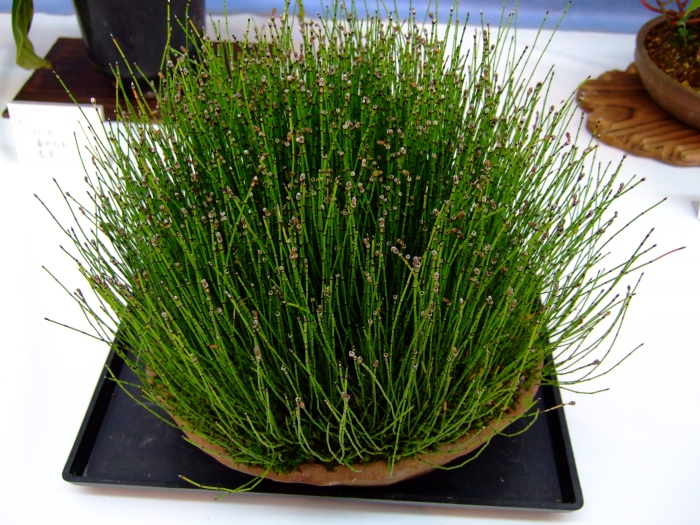Variegated Horsetail
(Equisetum variegatum)
Variegated Horsetail (Equisetum variegatum)
/
/

日:Jnn
CC BY 2.1 jp
Image By:
日:Jnn
Recorded By:
Copyright:
CC BY 2.1 jp
Copyright Notice:
Photo by: 日:Jnn | License Type: CC BY 2.1 jp | License URL: https://creativecommons.org/licenses/by/2.1/jp/deed.en | Uploader: Jnn | Publisher: Wikimedia Commons | Title: Flower-center130935.jpg | Notes: {{BotMoveToCommons|en.wikipedia|year={{subst:CURRENTYEAR}}|month={{subst:CURRENTMONTHNAME}}|day={{subst:CURRENTDAY}}}} {{Information |Description={{en|Eremophila bignoniiflora flower, softwood scrub, coastal Central Queensland}} |Source=Transferred from [ |
















































Estimated Native Range
Summary
Equisetum variegatum, commonly known as Variegated Horsetail or Variegated Scouring Rush, is a perennial herbaceous plant native to a wide variety of habitats including wetlands, riverbanks, and moist forest floors across the Northern Hemisphere. It is particularly adapted to cold climates and can be found in arctic and alpine regions. This species is characterized by its slender, rough, dark blue-green stems that can reach up to 40 cm in height, occasionally growing as tall as 80 cm. Some forms exhibit prostrate growth, creeping along the ground, while others are more erect. The stems may be unbranched or feature branches growing from the base, and the nodes are distinctively sheathed with a black band and dark teeth with white edges. The stems are topped with small, green cones with a black, bluntly-pointed tip, measuring 3–4 mm across.
Variegated Horsetail is appreciated for its unique texture and form, making it a striking addition to water gardens, bog gardens, and other moist cultivation areas. It is also used for its historical role as a scouring rush, due to the high silica content in its stems. In cultivation, it requires consistently moist or wet soil and can thrive in full sun to part shade. While it is relatively low-maintenance, it can spread aggressively via rhizomes, which may require management in garden settings. It is not typically afflicted by serious diseases or pests, but its invasive potential should be considered before planting.CC BY-SA 4.0
Variegated Horsetail is appreciated for its unique texture and form, making it a striking addition to water gardens, bog gardens, and other moist cultivation areas. It is also used for its historical role as a scouring rush, due to the high silica content in its stems. In cultivation, it requires consistently moist or wet soil and can thrive in full sun to part shade. While it is relatively low-maintenance, it can spread aggressively via rhizomes, which may require management in garden settings. It is not typically afflicted by serious diseases or pests, but its invasive potential should be considered before planting.CC BY-SA 4.0
Plant Description
- Plant Type: Herb
- Height: 0.5-1.5 feet
- Width: 1-3 feet
- Growth Rate: Moderate
- Flower Color: N/A
- Flowering Season: Non-Flowering
- Leaf Retention: Evergreen
Growth Requirements
- Sun: Full Sun, Part Shade
- Water: Medium
- Drainage: Slow, Medium, Fast
Common Uses
Erosion Control, Low Maintenance, Water Garden
Natural Habitat
Wide variety of habitats including wetlands, riverbanks, and moist forest floors across the Northern Hemisphere
Other Names
Common Names: Variegated Scouring Rush, Marchrawnen Fraith, Bunter Schachtelhalm, Prêle Panachée, Scuab Eich Bhreac, შვიტა, Fjellsnelle, Bonte Paardenstaart, Smalfräken
Scientific Names: , Equisetum variegatum,
GBIF Accepted Name: Equisetum variegatum Schleich.